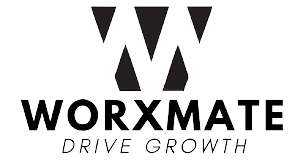- Product
Product Overview
Deep AI
Define, execute, evaluate and plan your OKR journey
OKR Solution
Discover focus, alignment and celebrate success
Performance Management System
Manage, Evaluate, and Increase Employee Performance
Task Management
Prioritize, plan, and deliver tasks effectively
Join leading organizations relying on Worxmate for efficient OKR management and success
Personas
CHRO
Optimize HR functions with our AI-driven performance management
CEO
Explore strategic leadership insights and best practices for CEOs
Strategy Head
Drive strategic excellence that fuels innovation & success
Product Head / CPO
Empower product leadership with goal alignment
Marketing Head
Empower Your Marketing Teams to Drive Growth, ROI, and Brand Impact
Sales Head
Maximize sales performance by data-driven decision making
L&D Head
Empower L&D Teams to drive growth and employee success
- OKR Consulting
- Pricing
- About Us
- Resources
- Contact Us
- HR
OKR Examples for HR: Boost Engagement and Productivity
- September 12, 2024
- 7 min read

Overview
See how Worxmate can help you achieve more of your strategy.
Human resources are one of the major drivers of engaging employees, stimulating productivity, and aligning the workforce towards achieving organizational objectives. OKRs, in a structured framework, enable HR departments to write clear goals in measurable ways so that afterwards, tracking the results becomes easy.
We will cover 10 great OKR examples tailored to the HR teams that will drive engagement, boost performance, and make a thriving workplace culture. From employee retention, training, or recruitment strategy, these OKR examples are bound to deliver results for you.
OKR Examples for HR 1
To become the top choice for talent by attracting and retaining the best in the industry, the goal is to enhance employer brand and workforce stability.
This involves increasing the offer acceptance rate by ensuring compensation and benefits packages are competitive and appealing to top candidates.
Reducing the voluntary turnover rate is also essential, with a focus on employee engagement and satisfaction to foster a loyal workforce. Additionally, achieving a high internal promotion rate for key roles demonstrates a commitment to employee development and career advancement.
These efforts will help position the company as a desirable workplace, attracting and retaining the talent necessary for sustained success.
Objective: Become the top choice for talent by attracting and retaining the best in the industry.
Key Results:
- Key result 1: Increase Offer Acceptance Rate to 85%
- Key result 2: Reduce Voluntary Turnover Rate to Below 10%
- Key result 3: Achieve a 70% Internal Promotion Rate for Key Roles
OKR Examples for HR 2
To enhance organizational culture and strengthen the workforce, the focus is on improving employee engagement and retention. Increasing the employee engagement score fosters a work environment where employees feel valued, motivated, and connected to the company’s mission.
Achieving a high participation rate in employee development programs ensures that employees have access to opportunities for growth and skill enhancement, which is crucial for personal and professional development.
Also, improving the employee retention rate through enhanced engagement strategies shows commitment to creating a supportive and fulfilling workplace. These initiatives will cultivate a dynamic and committed workforce, driving both individual and organizational success.
Objective: Create a highly engaged workforce to boost productivity and foster long-term commitment.
- Key Result 1: Increase Employee Engagement Score to 80%
- Key Result 2: Achieve a 95% Participation Rate in Employee Development Programs
- Key Result 3: Improve Employee Retention Rate by 15% through enhanced engagement strategies
OKR Examples for HR 3
To enhance employee well-being and create a healthier work environment, the focus is on reducing burnout and improving overall job satisfaction.
Decreasing the employee burnout rate involves implementing strategies that promote work-life balance, stress management, and mental health support.
Increasing participation in wellness programs encourages employees to engage in activities that foster physical and mental well-being, enhancing overall health.
Improving employee job satisfaction scores reflects a dedication to creating a positive workplace culture where employees feel fulfilled and valued. These initiatives will contribute to a more resilient and satisfied workforce, ultimately driving productivity and organizational success.
Objective: Enhance employee well-being to reduce burnout and improve overall job satisfaction.
- Key Result 1: Decrease Employee Burnout Rate to Below
- Key Result 2: Increase Participation in Wellness Programs to 85%
- Key Result 3: Achieve a 75% Improvement in Employee Job Satisfaction Scores
Boost Engagement and Productivity in Your HR Team With Worxmate.
OKR Examples for HR 4
To optimize the onboarding processes and enhance the new hire experience, the goal is to streamline and improve every aspect of onboarding, ensuring that new employees are integrated smoothly and efficiently into the company.
This involves reducing the average time it takes for new hires to reach full productivity, which will boost overall team performance and operational efficiency.
Achieving a high satisfaction score for the onboarding process is critical, as a positive experience sets the tone for long-term engagement and satisfaction. Implementing a structured 90-day onboarding plan will provide clarity and support for new employees, helping them to navigate their new roles with confidence and ease.
These efforts will result in a more effective onboarding process that accelerates productivity, increases new hire satisfaction, and lays a strong foundation for their future success within the company.
Objective: Optimize Onboarding Processes to Improve New Hire Experience
- Key Result 1: Reduce the average time-to-productivity for new hires by 25%
- Key Result 2: Achieve a 90% new hire satisfaction score with the onboarding process
- Key Result 3: Implement a structured 90-day onboarding plan for all new hires
OKR Examples for HR 5
To strengthen employer branding and attract top talent, the goal is to enhance the company’s reputation as an employer of choice, making it a magnet for highly qualified candidates.
This involves increasing the company’s Glassdoor rating, which serves as a key indicator of employee satisfaction and a critical factor in attracting potential hires. Doubling the number of qualified applicants per open position will ensure that the company has a deep pool of talent to choose from, improving the overall quality of hires.
Additionally, increasing social media engagement on employer branding posts will expand the company’s reach and influence, showcasing the company culture and values to a wider audience.
These efforts will collectively enhance the company’s image as a desirable workplace, attracting the top talent needed to drive the organization’s success.
Objective: Strengthen Employer Branding to Attract Top Talent
- Key Result 1: Increase the company’s Glassdoor rating to 4.5 stars
- Key Result 2: Double the number of qualified applicants per open position
- Key Result 3: Increase social media engagement on employer branding posts by 40%.
OKR Examples for HR 6
To improve performance management and foster continuous development, the goal is to create a robust system that encourages ongoing growth and development for all employees.
This involves implementing a 360-degree feedback system, providing employees with comprehensive and constructive feedback from peers, managers, and subordinates, which is crucial for holistic development.
Achieving a high completion rate for performance reviews ensures that the performance management process is thorough, consistent, and valued across the organization.
Additionally, increasing the percentage of employees meeting or exceeding performance expectations demonstrates the performance management system’s effectiveness in driving individual and organizational success.
These initiatives will create a culture of continuous development, where employees are consistently supported and motivated to achieve their best.
Objective: Improve Performance Management to Foster Continuous Development
- Key Result 1: Implement a 360-degree feedback system for all employees
- Key Result 2: Achieve a 95% completion rate for performance reviews
- Key Result 3: Increase the percentage of employees meeting or exceeding performance expectations to 90%
OKR Examples for HR 7
To enhance leadership development programs and build future leaders, the goal is to cultivate a strong pipeline of leadership talent within the organization.
This involves enrolling a significant portion of high-potential employees in leadership development programs, ensuring they receive the training and mentorship needed to step into leadership roles.
Achieving a high promotion rate for program participants within 12 months of completion demonstrates the effectiveness of these programs in preparing employees for leadership positions.
Additionally, increasing employee satisfaction with leadership opportunities reflects the organization’s commitment to providing clear and accessible career advancement paths.
These efforts will not only strengthen the leadership capabilities within the company but also foster a culture of growth and development, positioning the organization for long-term success.
Objective: Enhance Leadership Development Programs to Build Future Leaders
- Key Result 1: Enroll 80% of high-potential employees in leadership development programs
- Key Result 2: Achieve a 70% promotion rate for program participants within 12 months of completion
- Key Result 3: Increase employee satisfaction with leadership opportunities to 85%
OKR Examples for HR 8
To implement data-driven HR practices for strategic decision-making, the goal is to leverage data and analytics to enhance the effectiveness and efficiency of HR operations.
This involves automating HR data analytics and reporting, which will provide real-time insights and streamline the decision-making process.
By reducing HR decision-making time through data-driven insights, the organization can respond more quickly and accurately to workforce needs and opportunities.
Achieving a high accuracy rate in HR data tracking ensures that decisions are based on reliable and precise information, minimizing errors and improving overall outcomes.
These efforts will transform HR into a strategic partner, enabling data-driven decisions that support the organization’s goals and drive success.
Objective: Implement Data-Driven HR Practices for Strategic Decision Making
- Key Result 1: Automate HR data analytics and reporting
- Key Result 2: Reduce HR decision-making time by 30% through data insights
- Key Result 3: Achieve a 95% accuracy rate in HR data tracking
OKR Examples for HR 9
To promote work-life balance and improve employee well-being, the goal is to create a supportive work environment that allows employees to balance their personal and professional lives effectively.
This involves increasing the adoption of flexible work arrangements, enabling employees to tailor their work schedules to better fit their individual needs.
Achieving a high employee satisfaction rate with work-life balance initiatives reflects the organization’s commitment to supporting employee well-being.
Additionally, reducing the average number of overtime hours per employee demonstrates a focus on maintaining a healthy work-life balance, preventing burnout, and promoting long-term productivity. These efforts will foster a positive and balanced work culture, leading to happier, healthier, and more engaged employees.
Objective: Promote Work-Life Balance to Improve Employee Well-being
- Key Result 1: Increase flexible work arrangement adoption to 75%
- Key Result 2: Achieve an 80% employee satisfaction rate with work-life balance initiatives
- Key Result 3: Reduce the average number of overtime hours per employee by 20%
OKR Examples for HR 10
To drive employee engagement through recognition and rewards, the goal is to create a culture where employees feel valued and appreciated for their contributions.
This involves launching a new employee recognition program with full participation, ensuring that every team member is acknowledged for their efforts. Increasing the frequency of employee recognition by 50% will foster a more positive and motivating work environment, where achievements are regularly celebrated.
Achieving a high satisfaction rate with the recognition and rewards program reflects the effectiveness of these initiatives in boosting morale and engagement. These efforts will help build a strong culture of appreciation, leading to higher employee satisfaction, loyalty, and overall engagement.
Objective: Drive Employee Engagement through Recognition and Rewards
- Key Result 1: Launch a new employee recognition program with 100% participation.
- Key Result 2: Increase employee recognition frequency by 50%.
- Key Result 3: Achieve a 90% satisfaction rate with the recognition and rewards program.
Worxmate, the ultimate OKR software for HR teams. Streamline goal-setting and drive results.
Boost Engagement and Productivity in Your HR Team With Worxmate.
